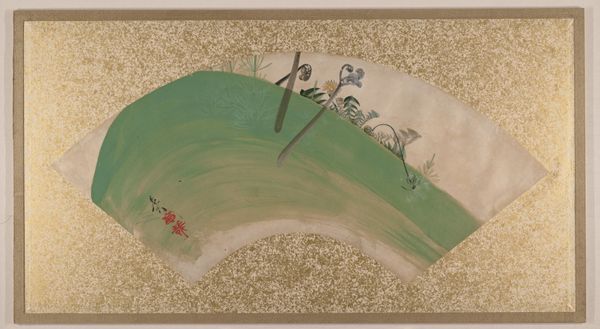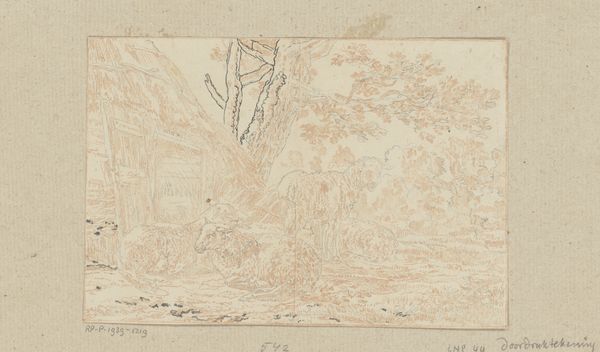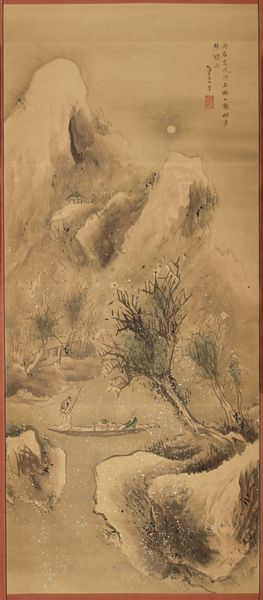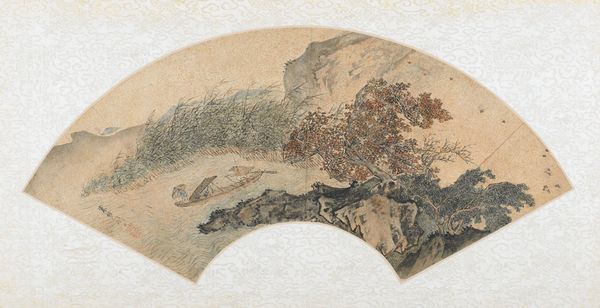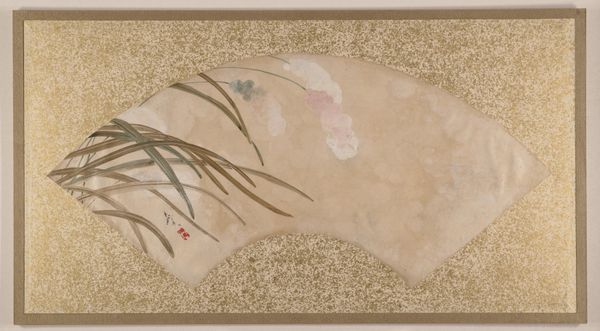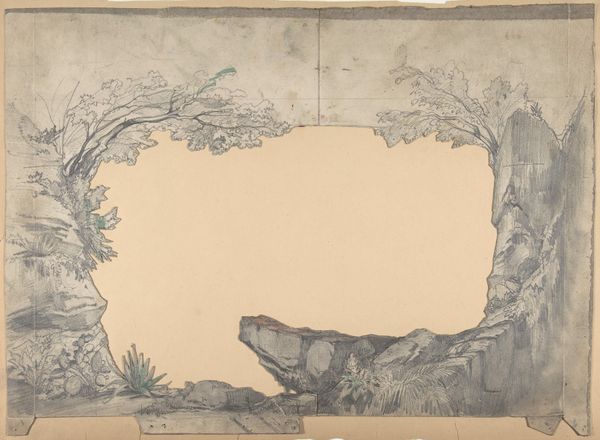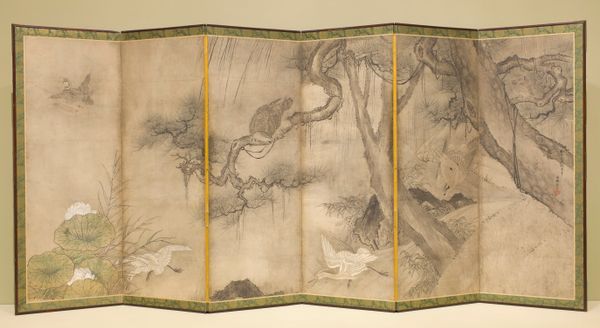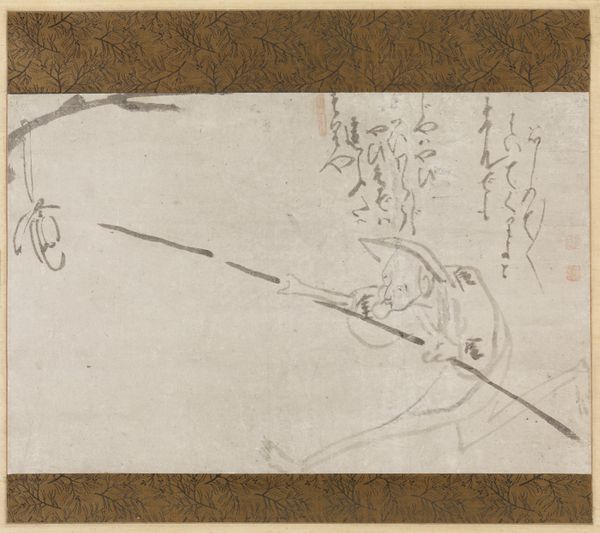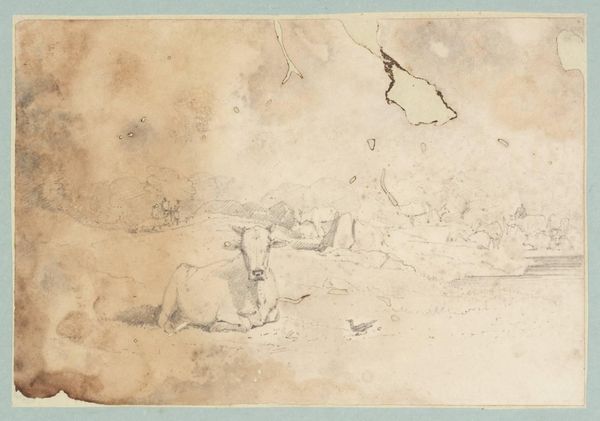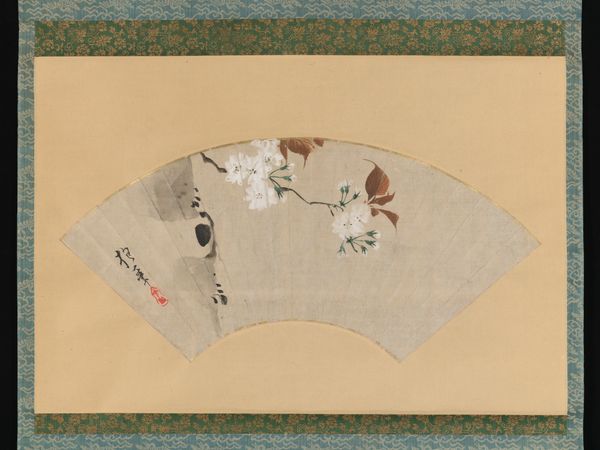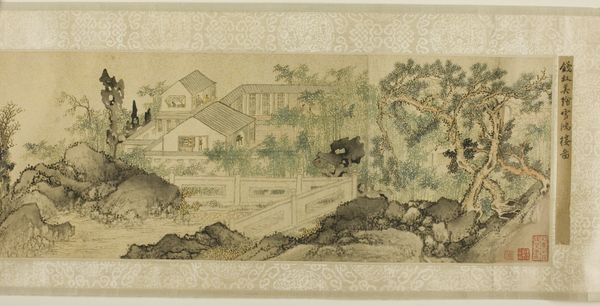
Dimensions: Overall: 13 x 23 5/8 in. (33 x 60 cm) Image: 7 1/2 x 20 1/2 in. (19.1 x 52.1 cm)
Copyright: Public Domain
Editor: This watercolor piece is titled "House with Woman and Baby," created by Shibata Zeshin sometime between 1867 and 1891. It’s quite delicate, especially the way the scene is framed within the fan shape. What strikes you most about this artwork? Curator: I’m drawn to how Zeshin positions domesticity within a landscape tradition so closely associated with Japanese identity. What does it mean to depict motherhood within a context often used to define nationhood, particularly during a time of rapid modernization and western influence in Japan? Is the artist reinforcing traditional gender roles, or perhaps subtly elevating the domestic sphere? Editor: That's a really interesting point. I hadn’t considered the tension between domesticity and national identity here. Do you see any visual cues that might hint at his intention? Curator: Notice how the home blends into the natural surroundings. The blurred lines perhaps suggest the inseparability of the domestic sphere and the 'Japanese' landscape, challenging a rigid dichotomy between the two. The very act of framing it within the fan shape, historically linked to courtly life and later popular culture, suggests an integration, even a celebration, of the everyday life into idealized cultural forms. Editor: I see what you mean. So, by using traditional techniques and forms to depict a common scene, Zeshin is making a statement about the value of ordinary life within a larger cultural narrative? Curator: Precisely. He seems to democratize the very idea of Japanese identity by including elements that are both highly idealized, like the landscape tradition, and grounded in daily life. Thinking about Ukiyo-e traditions, this challenges our expectations of traditional subject matter in woodblock prints by questioning whose stories get told and who occupies the center of the Japanese cultural narrative. Editor: That makes me see the artwork in a totally new way. I initially thought it was just a sweet depiction of motherhood, but now I appreciate the complex social commentary embedded in it. Curator: Art has the power to do that.
Comments
No comments
Be the first to comment and join the conversation on the ultimate creative platform.
